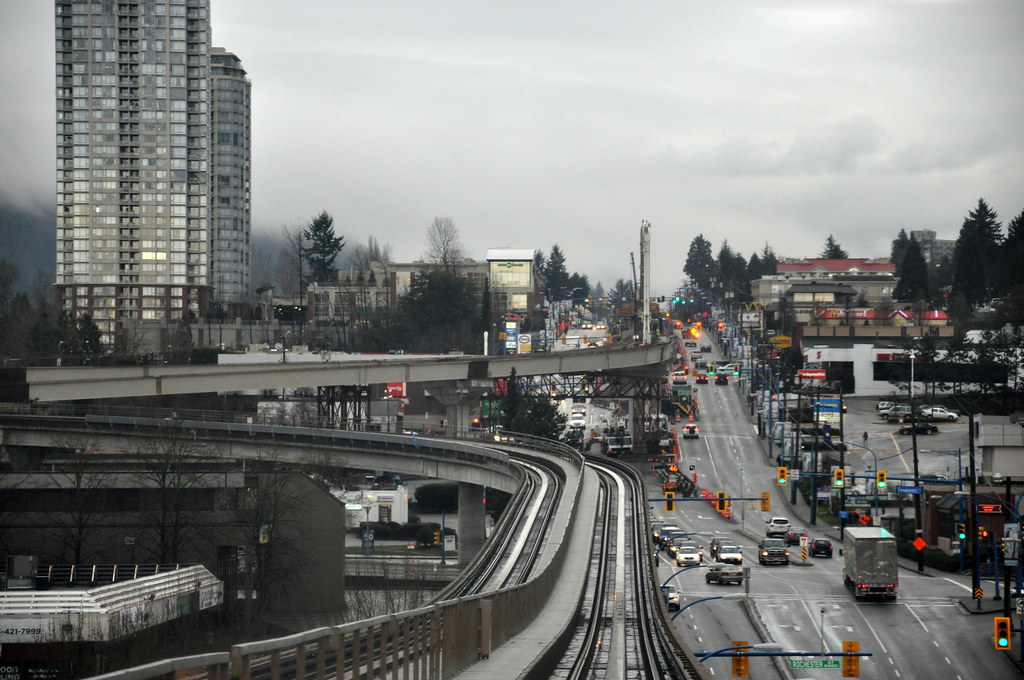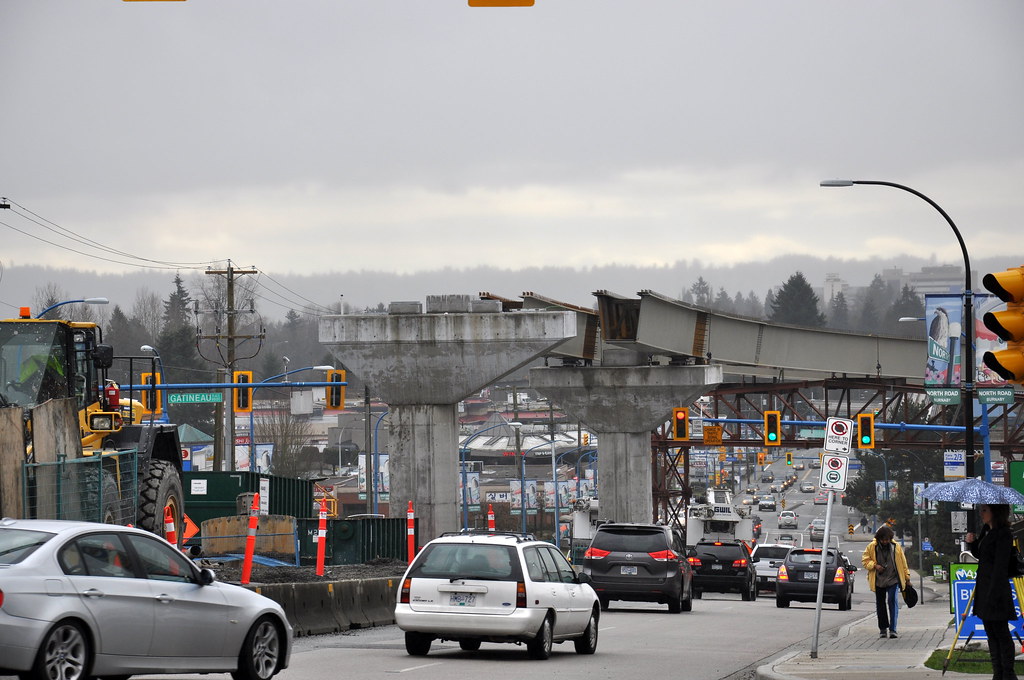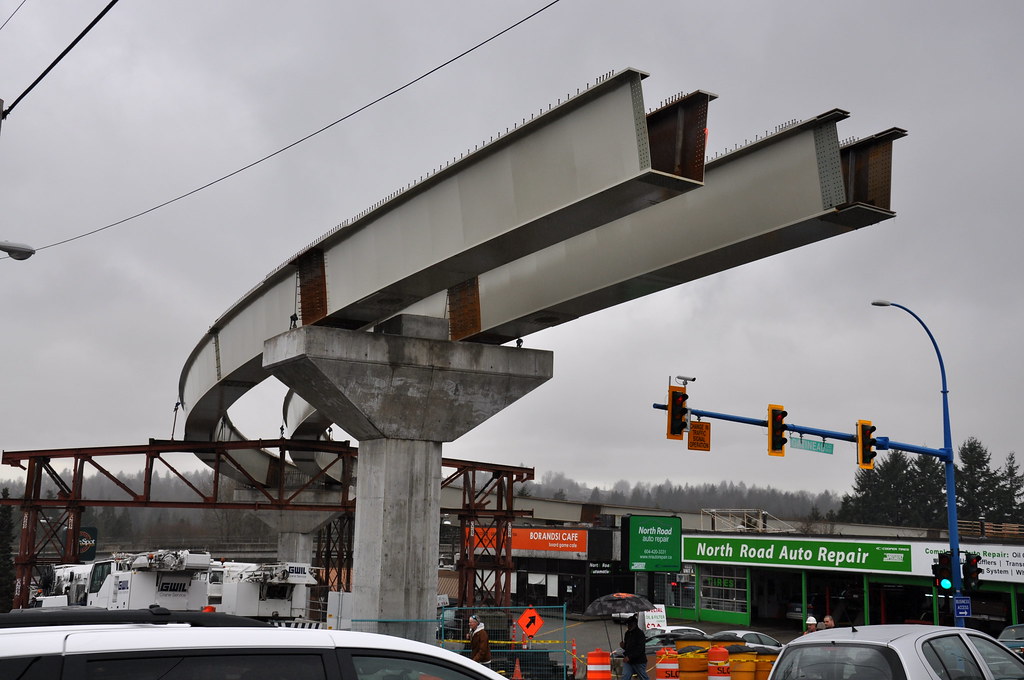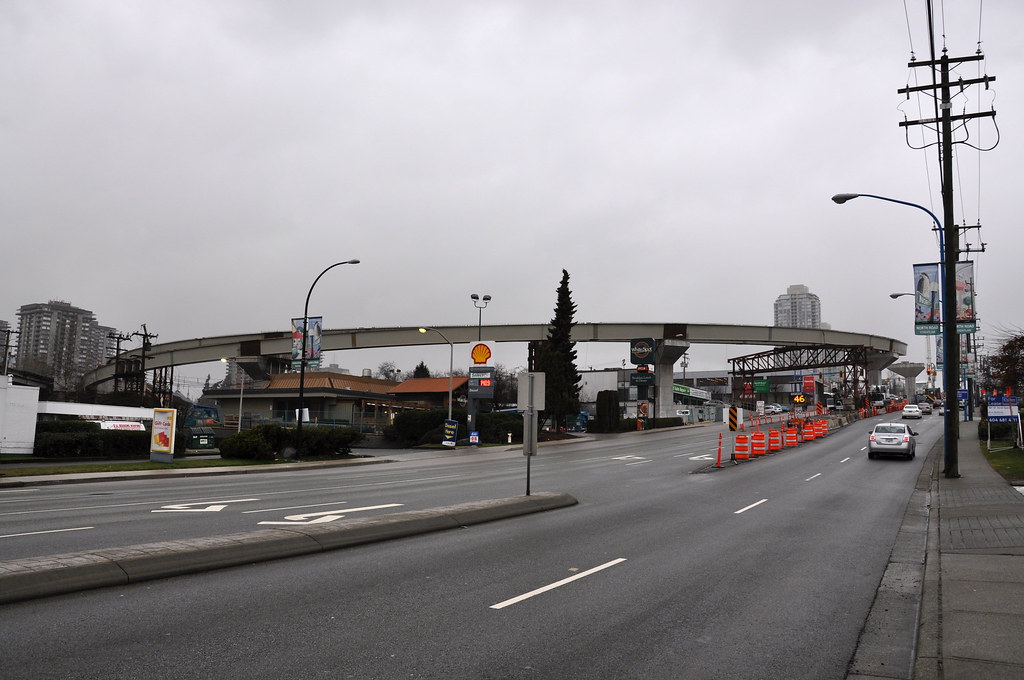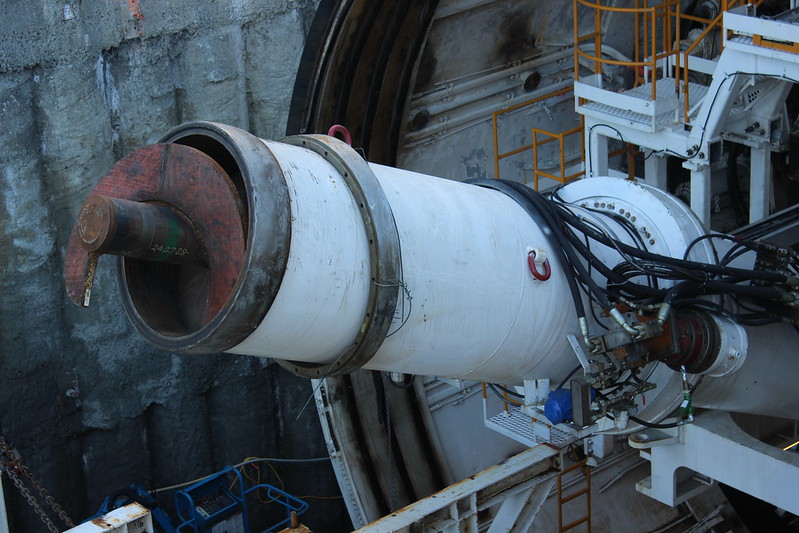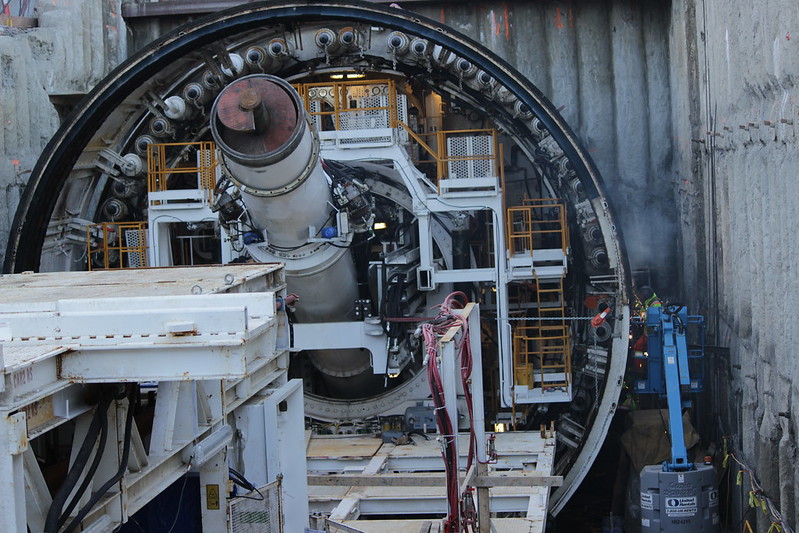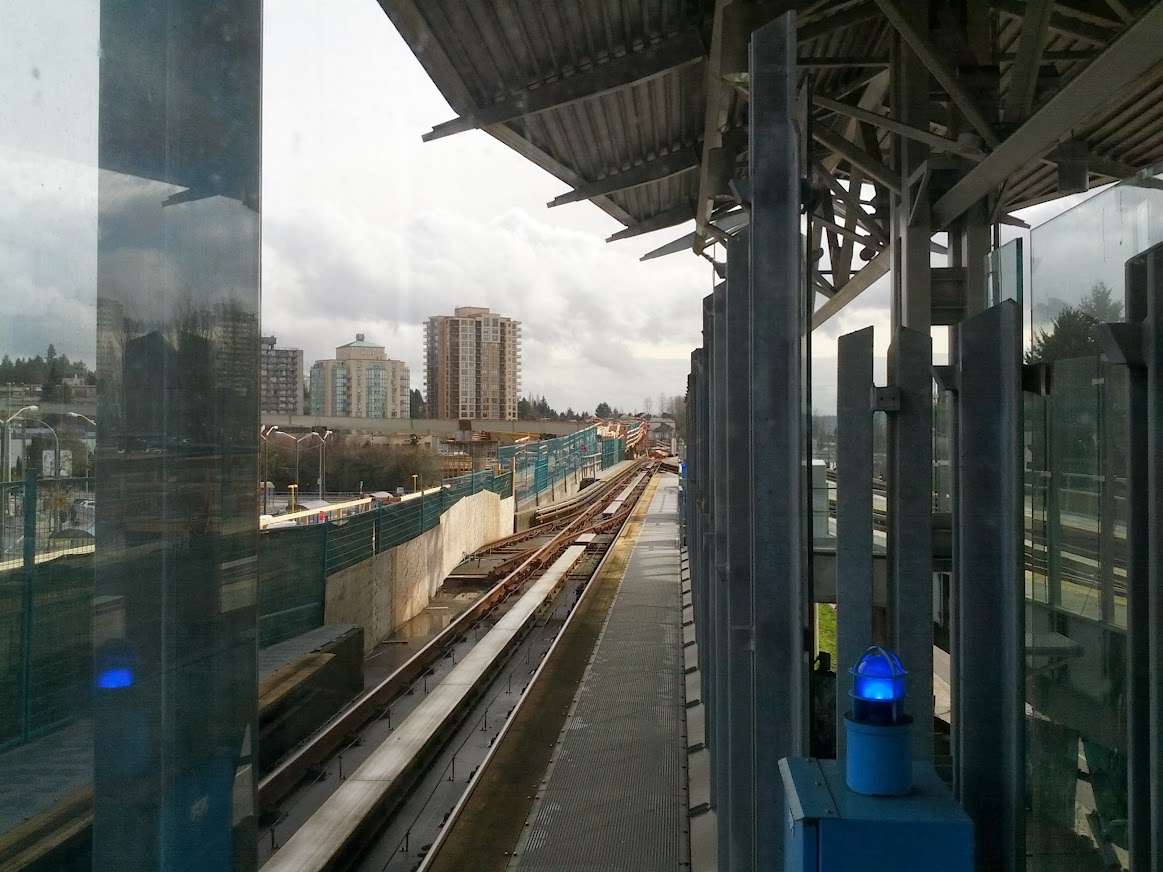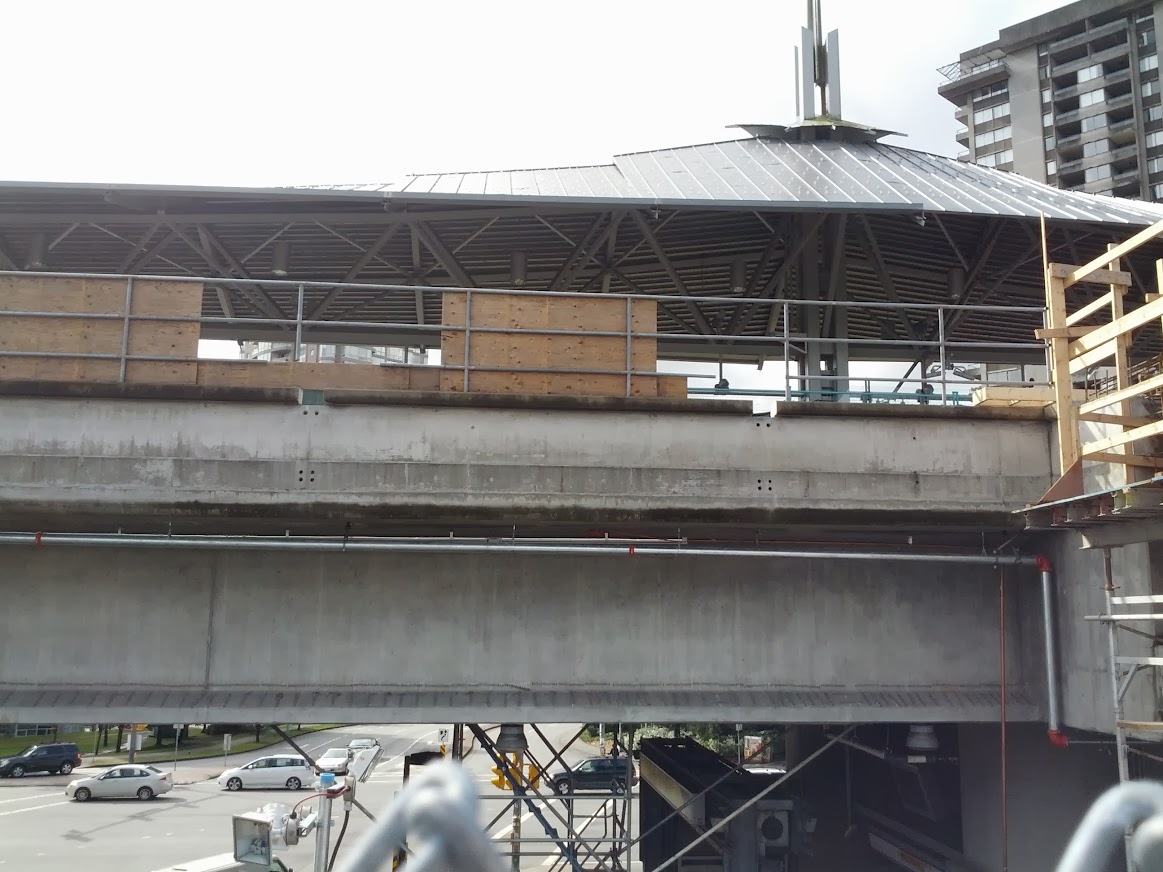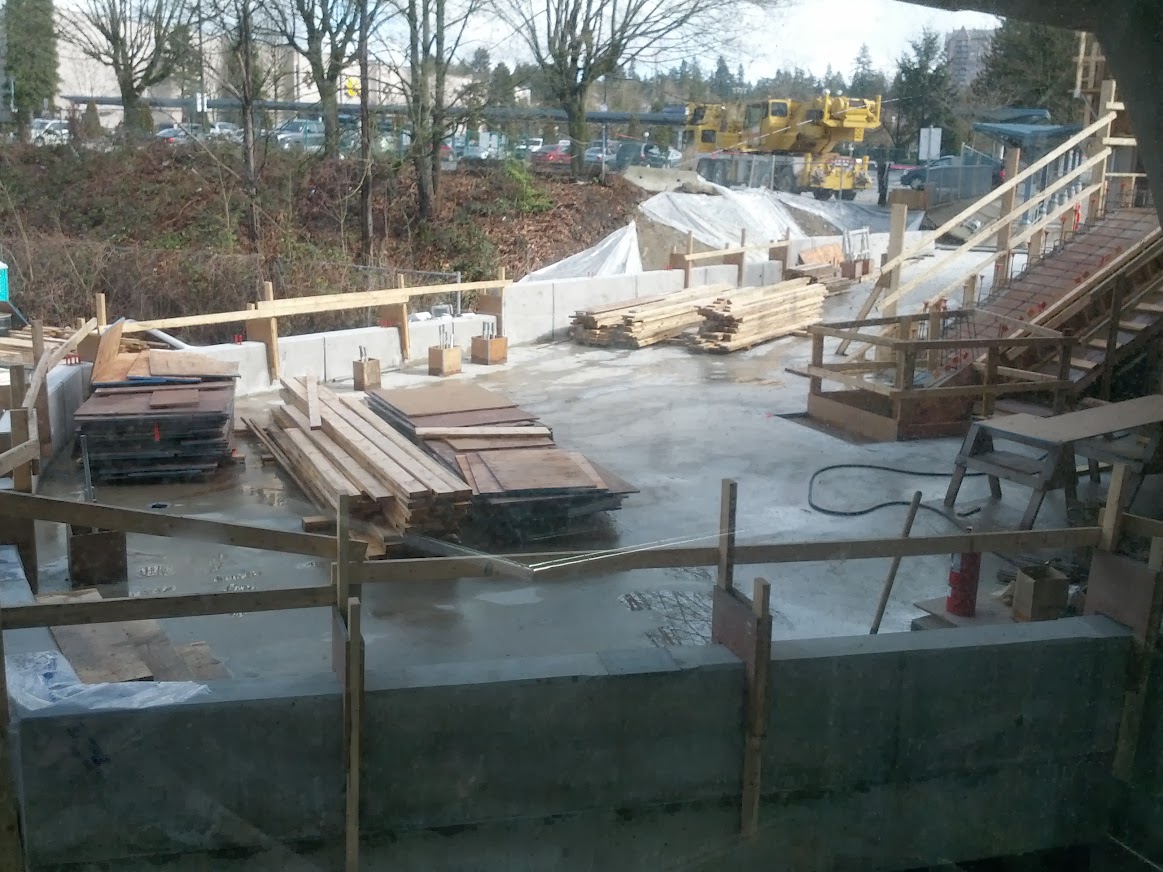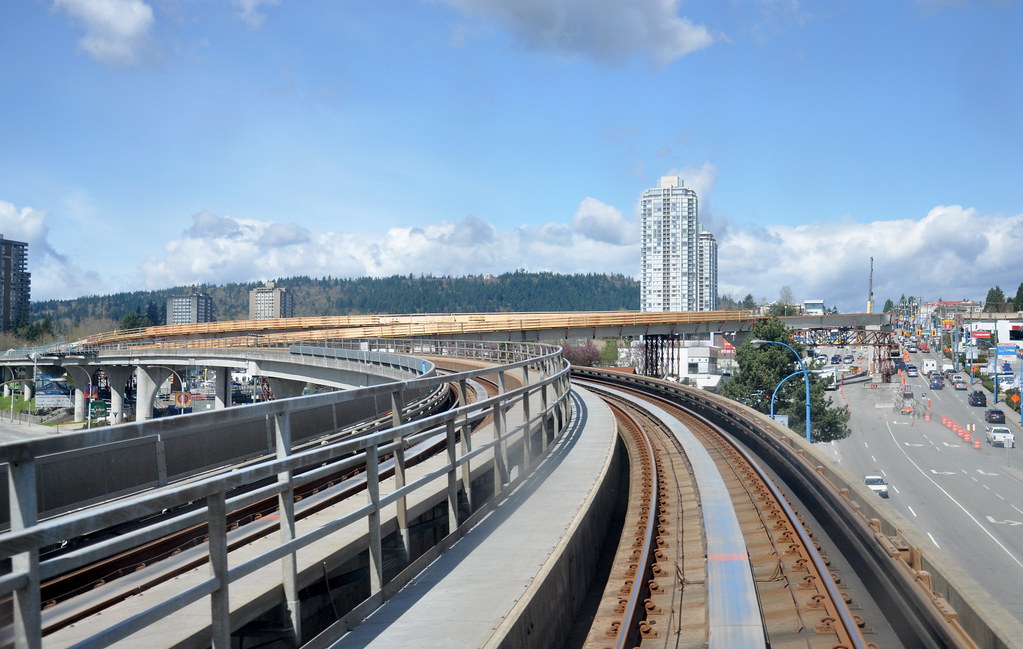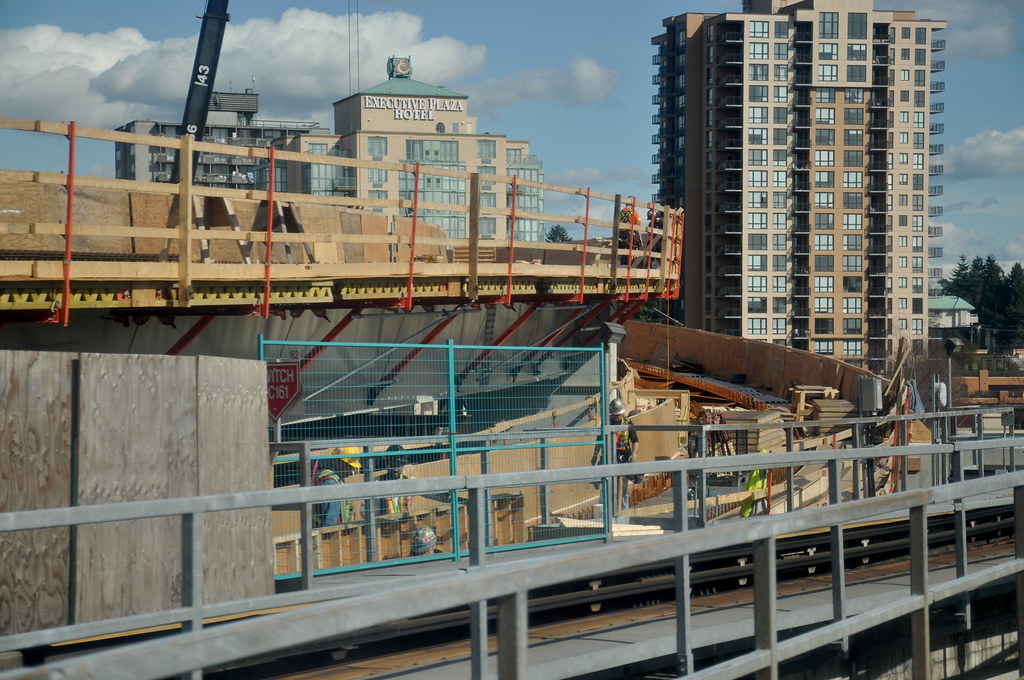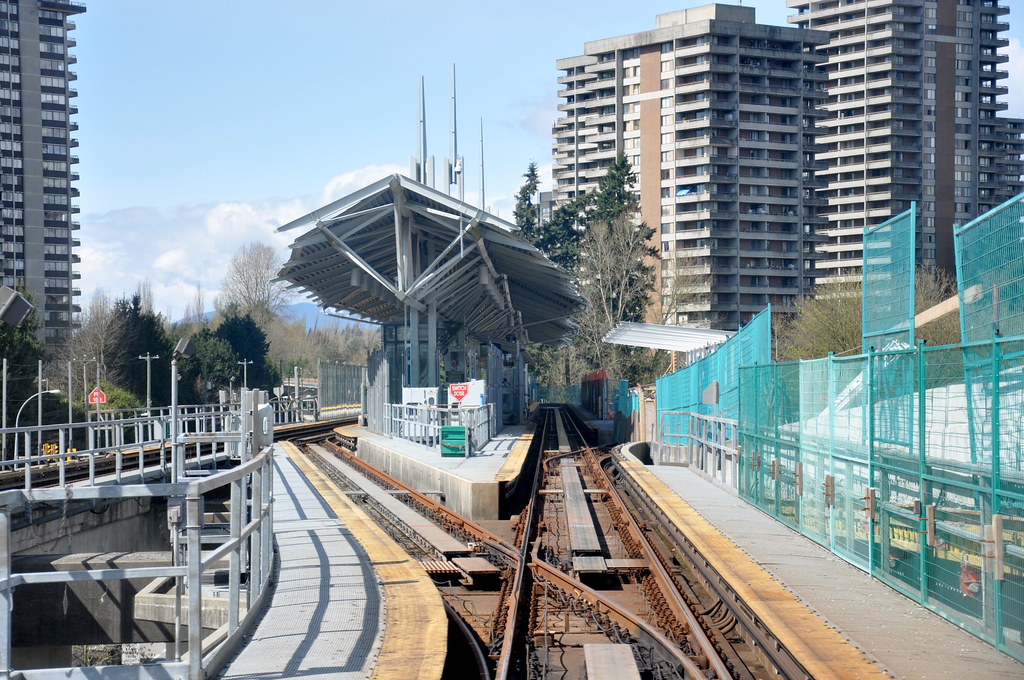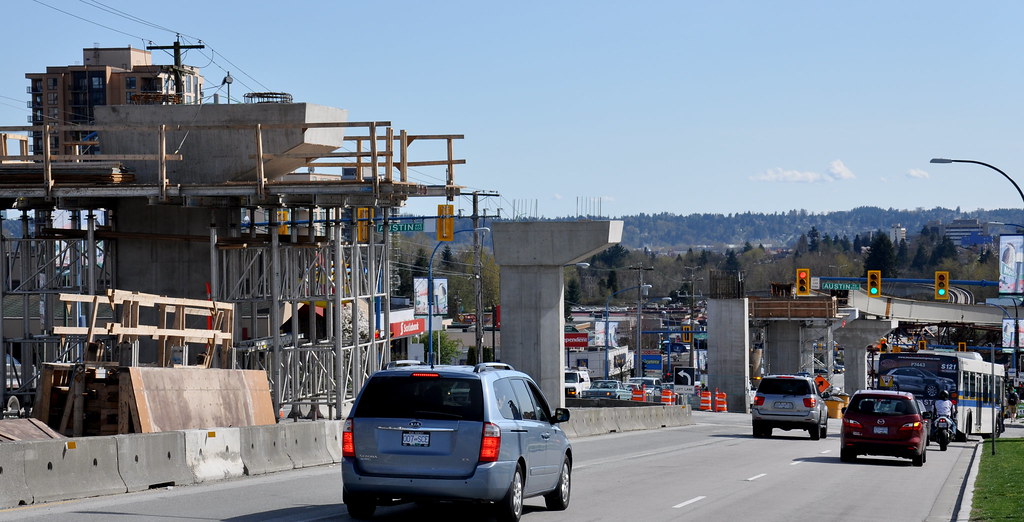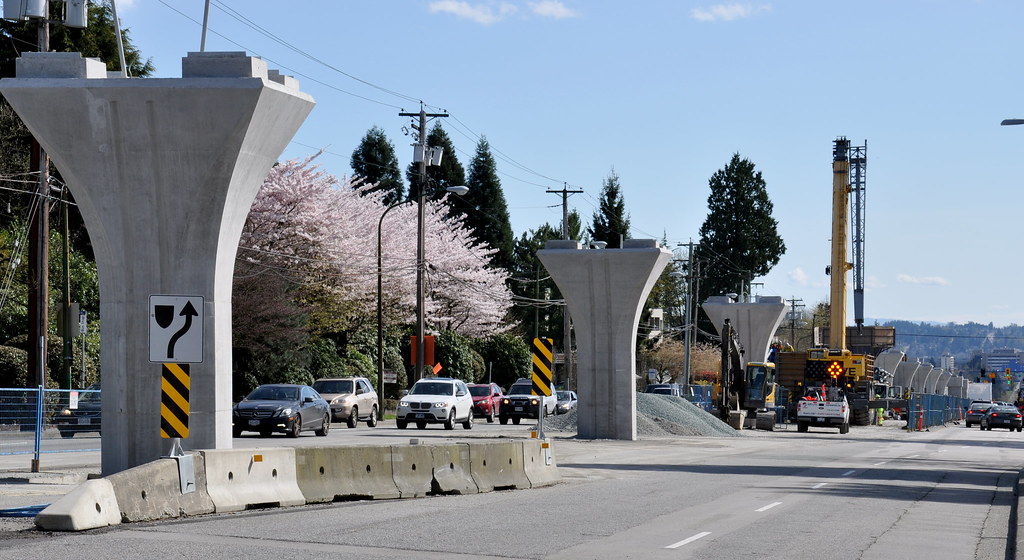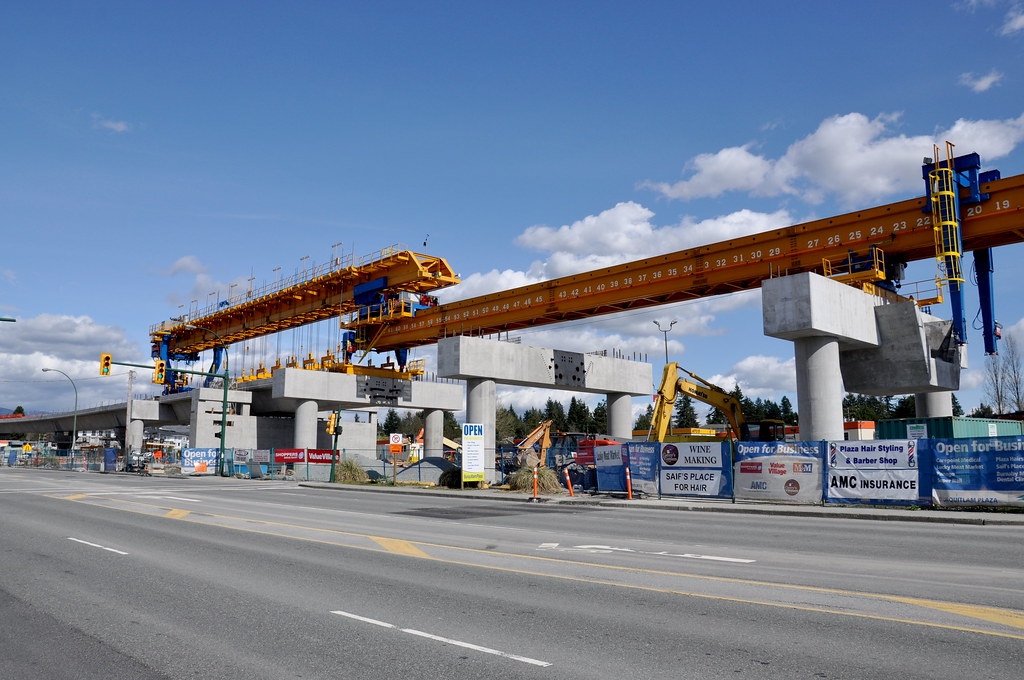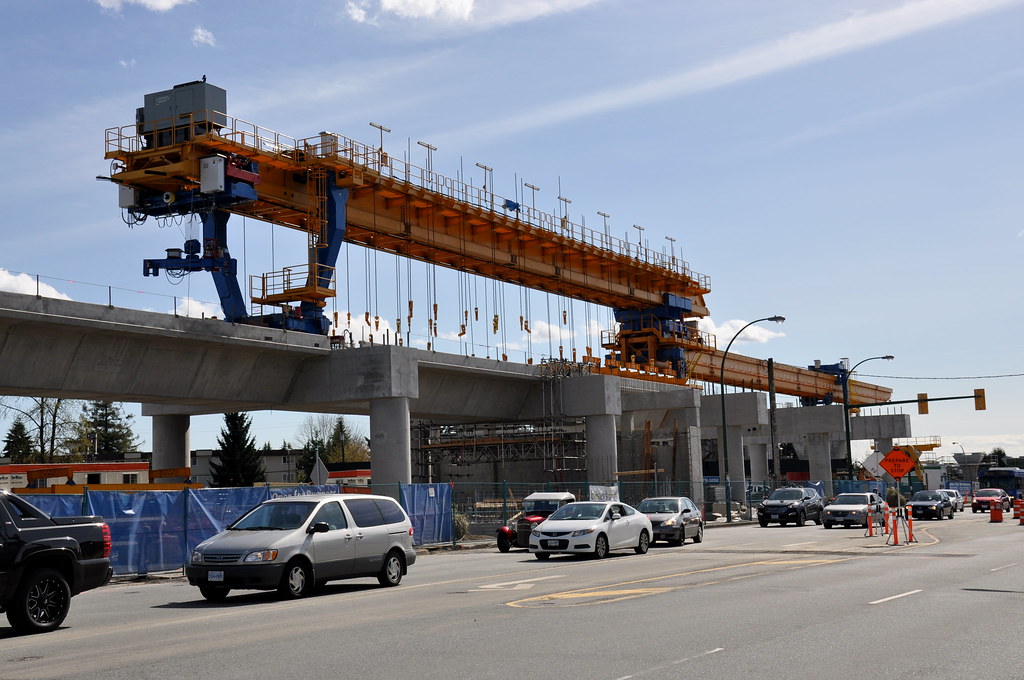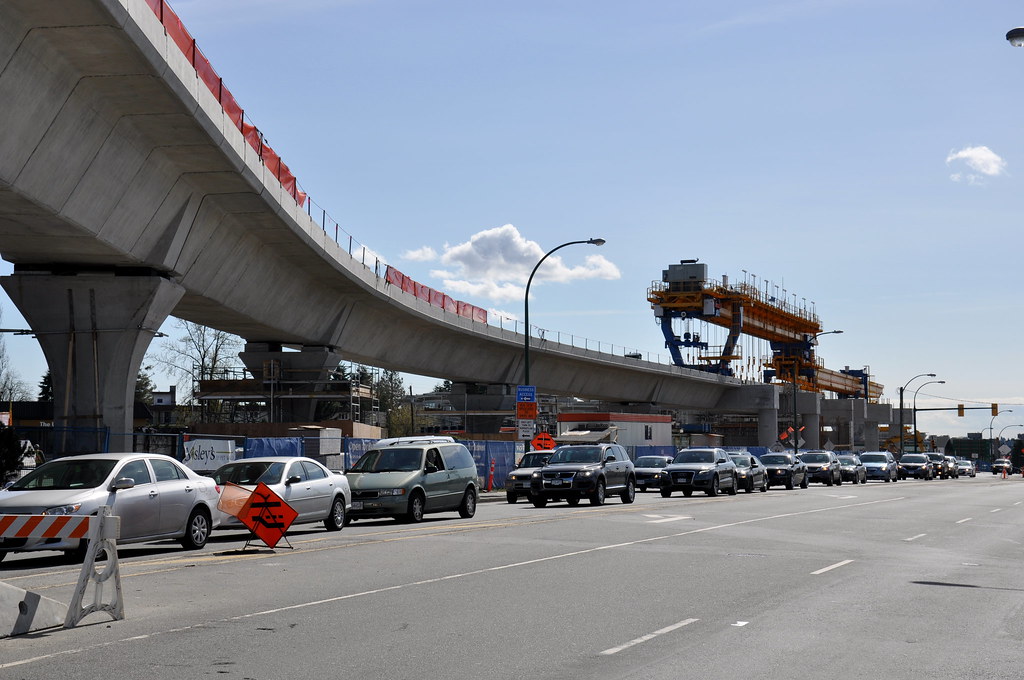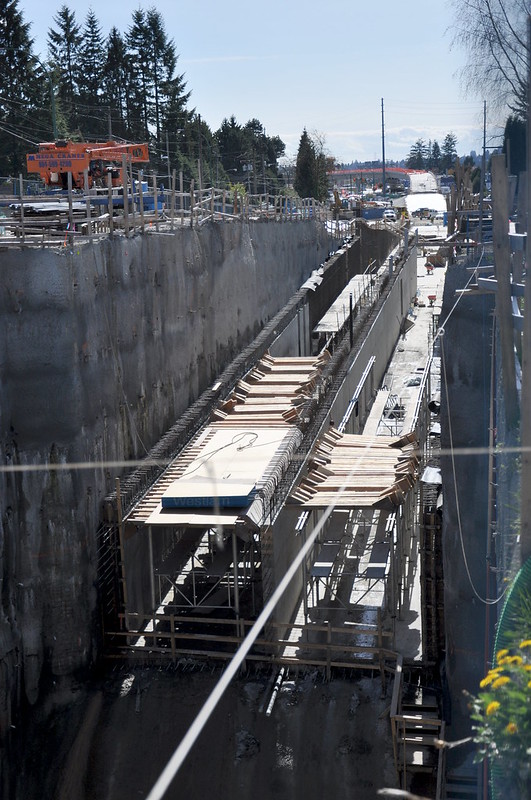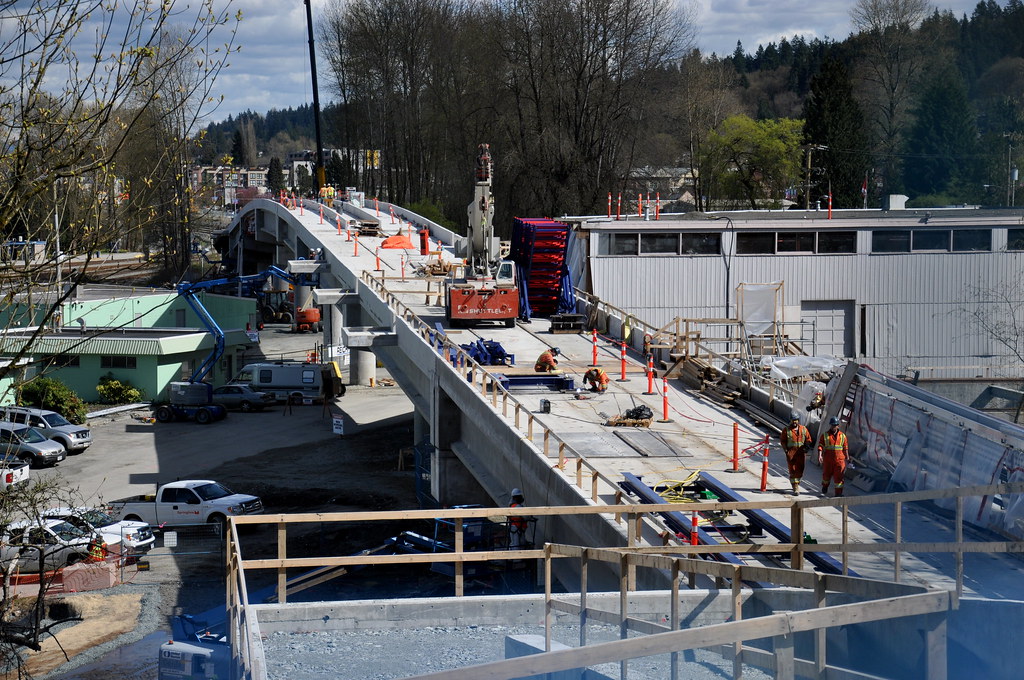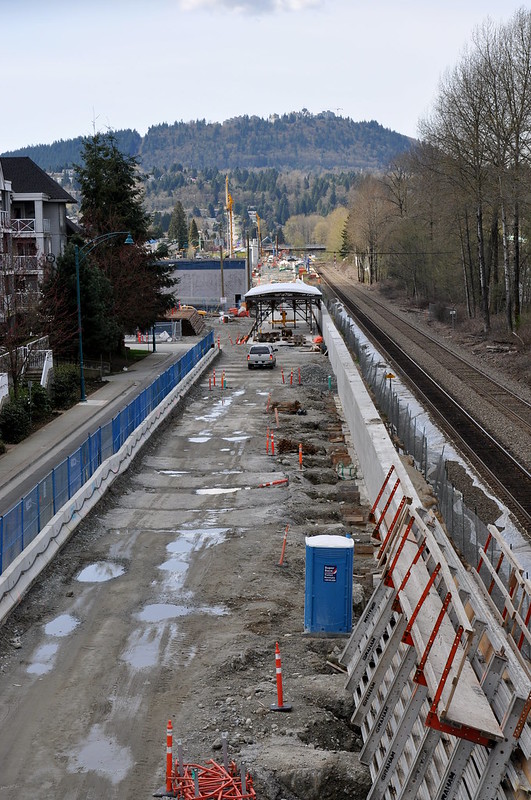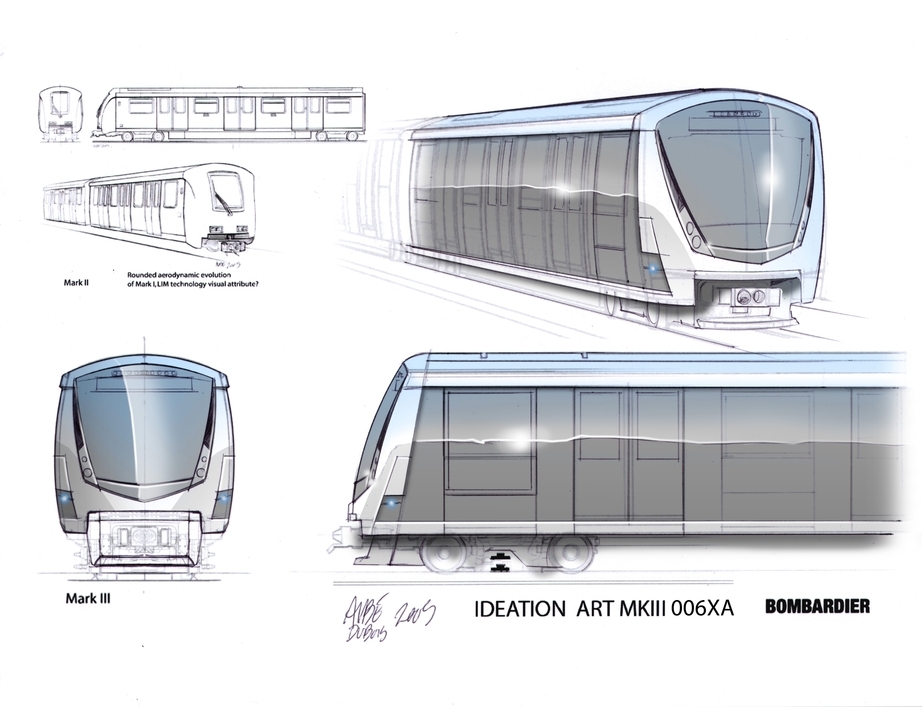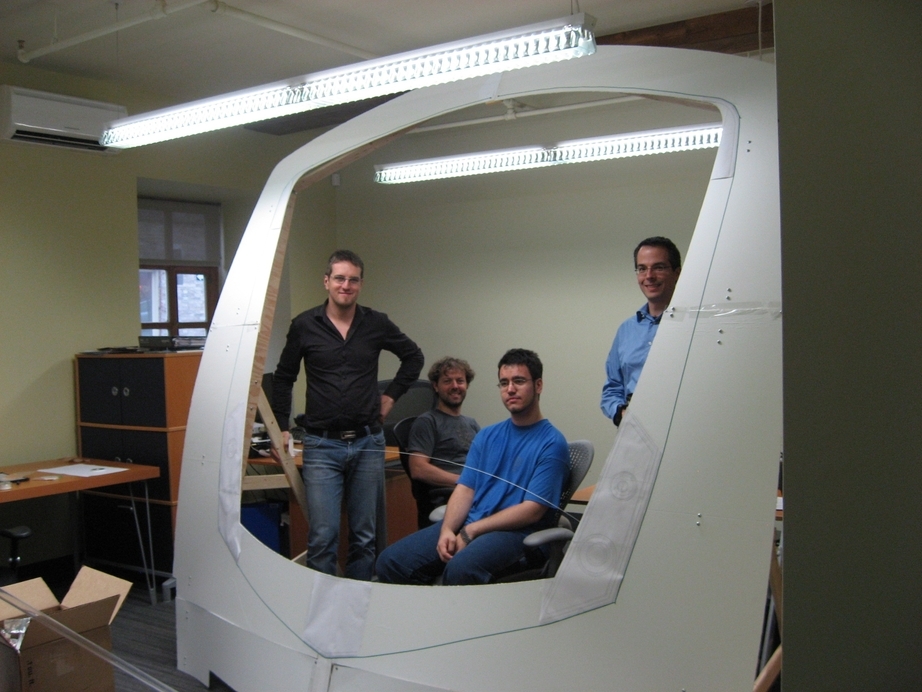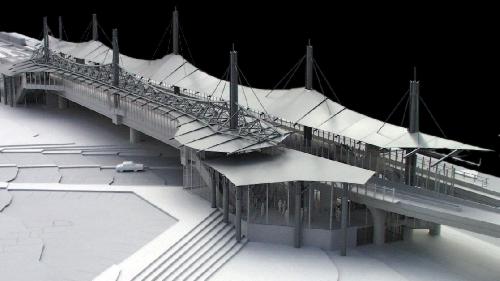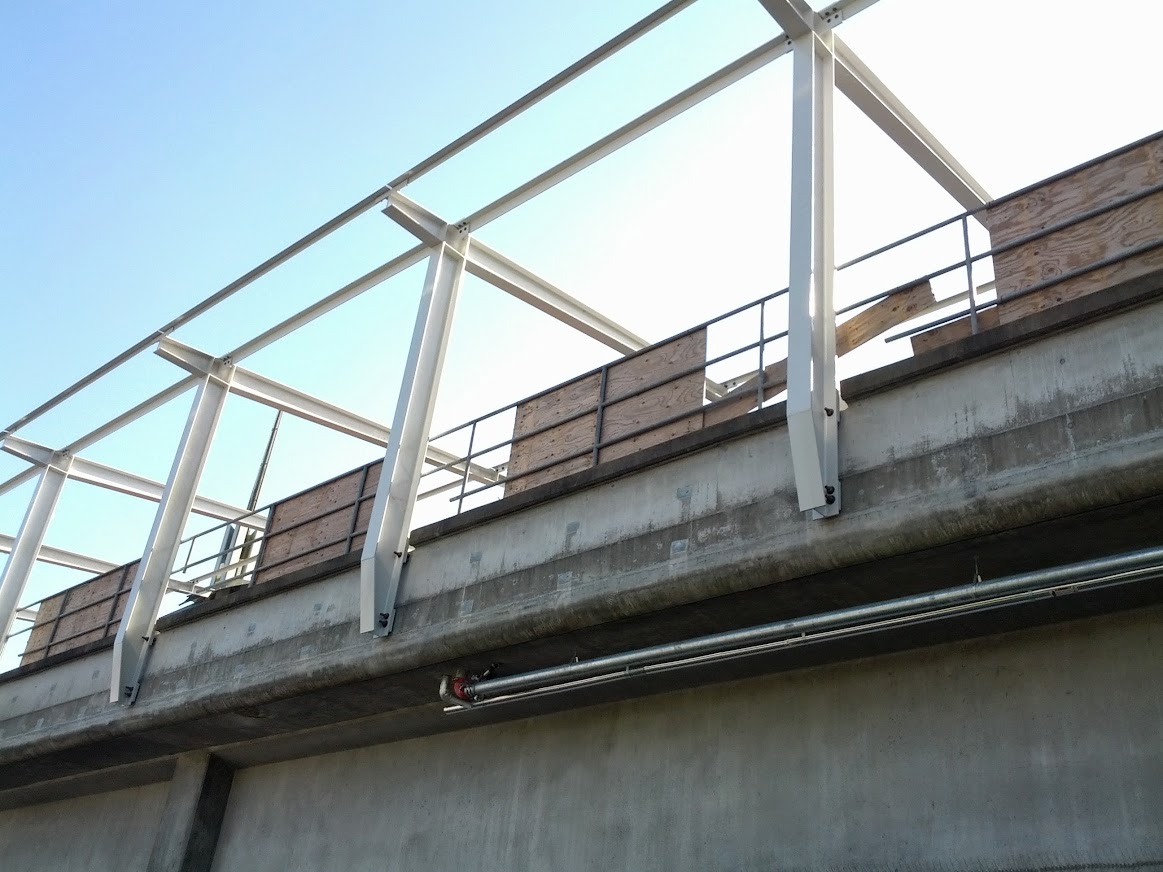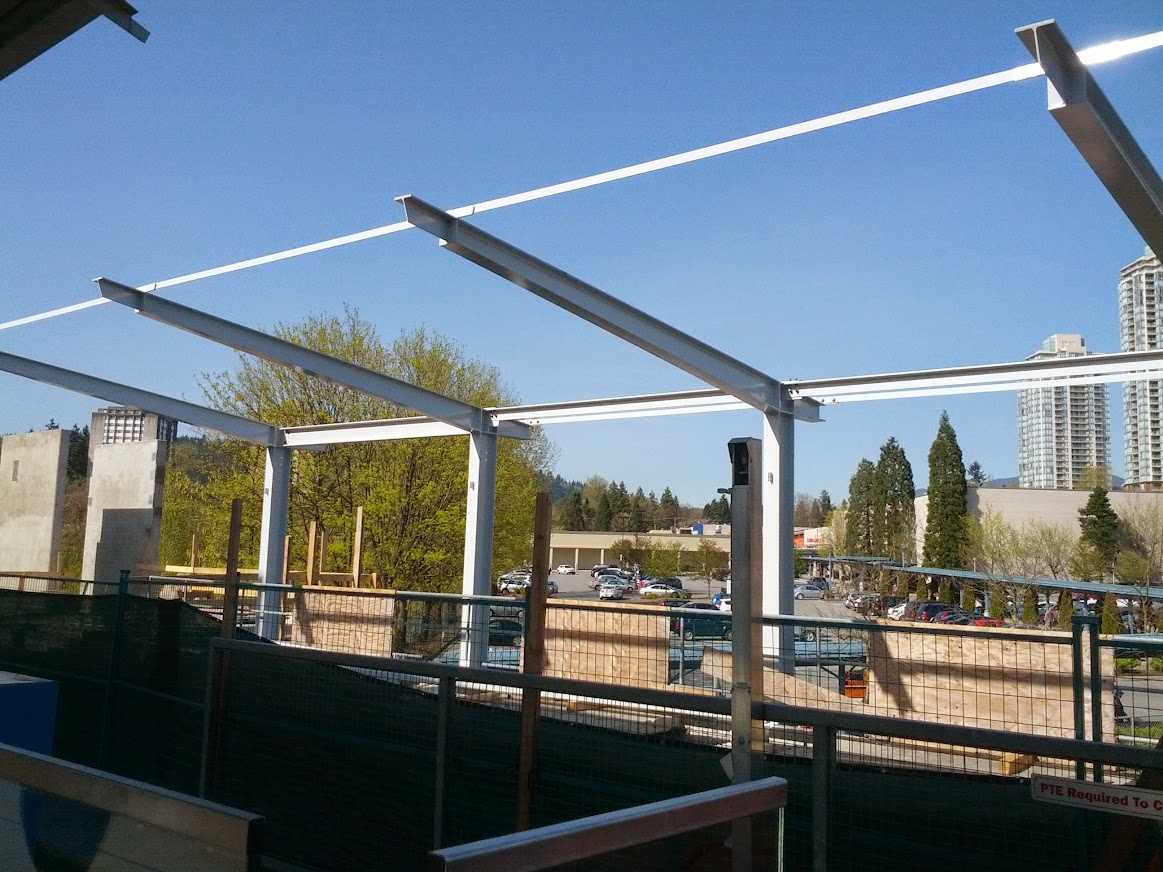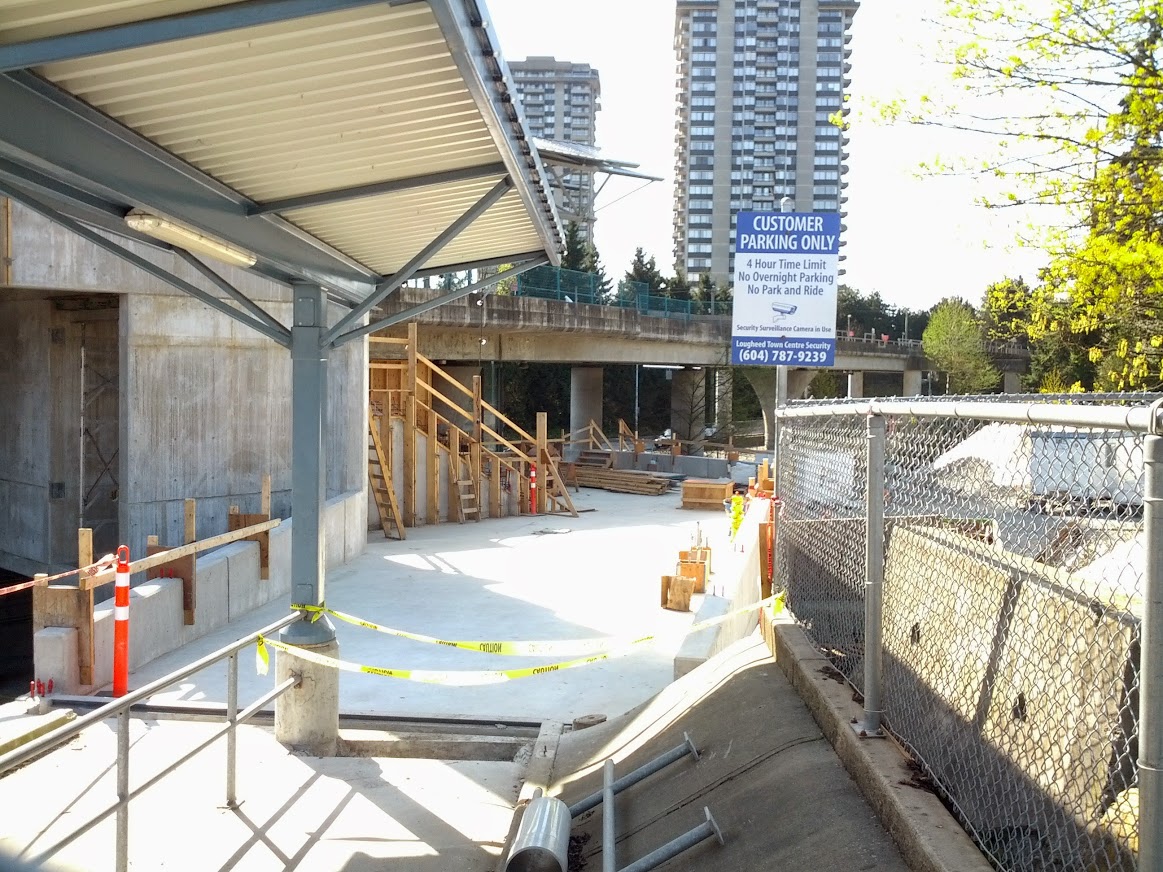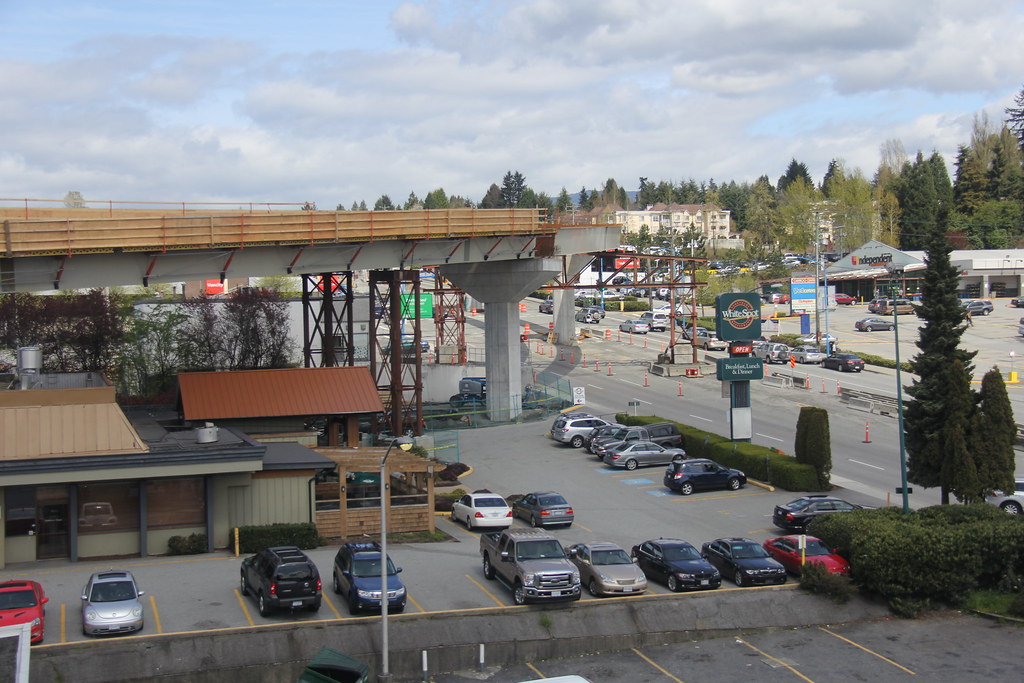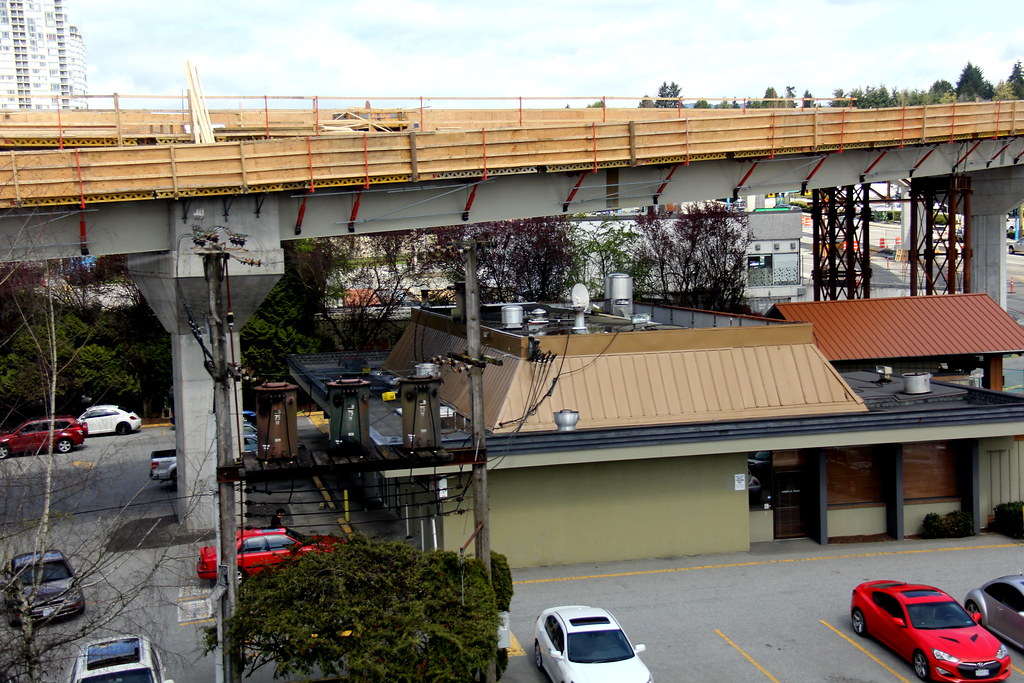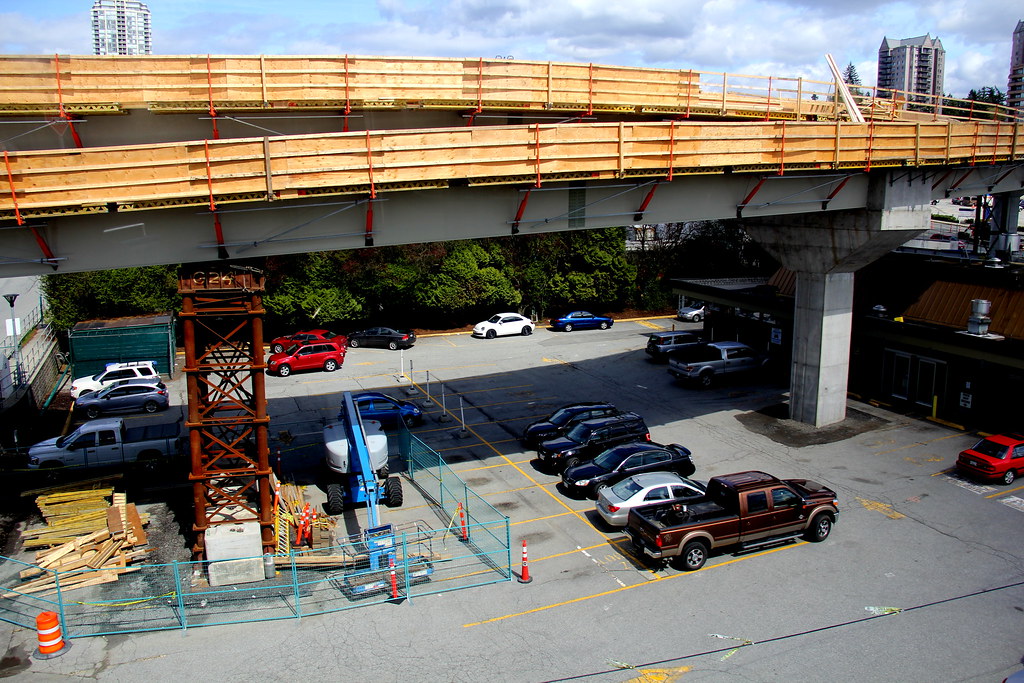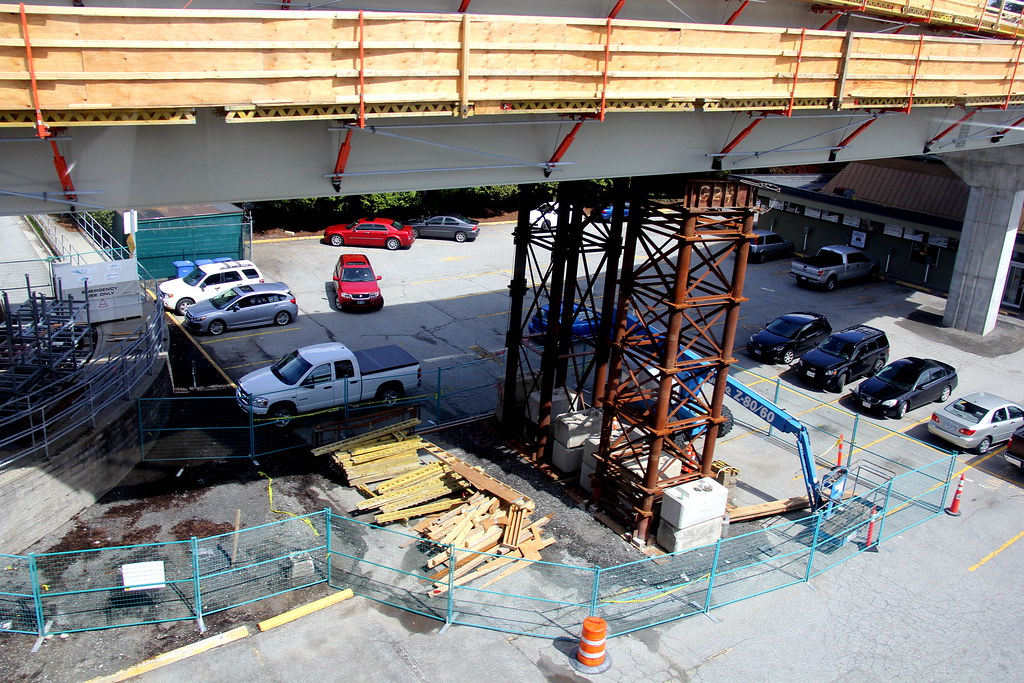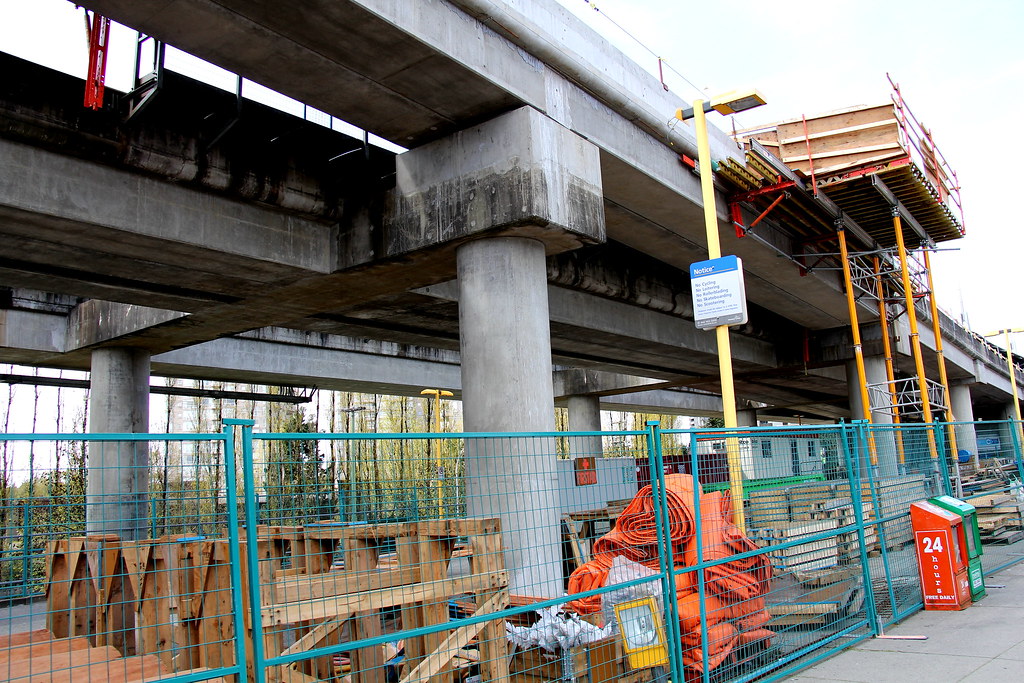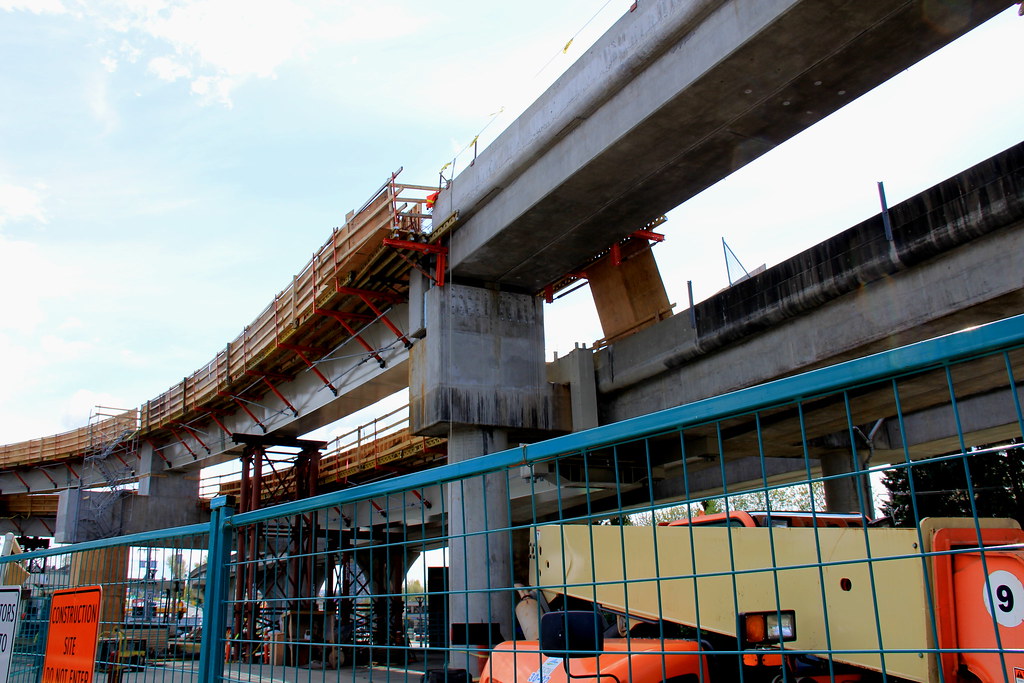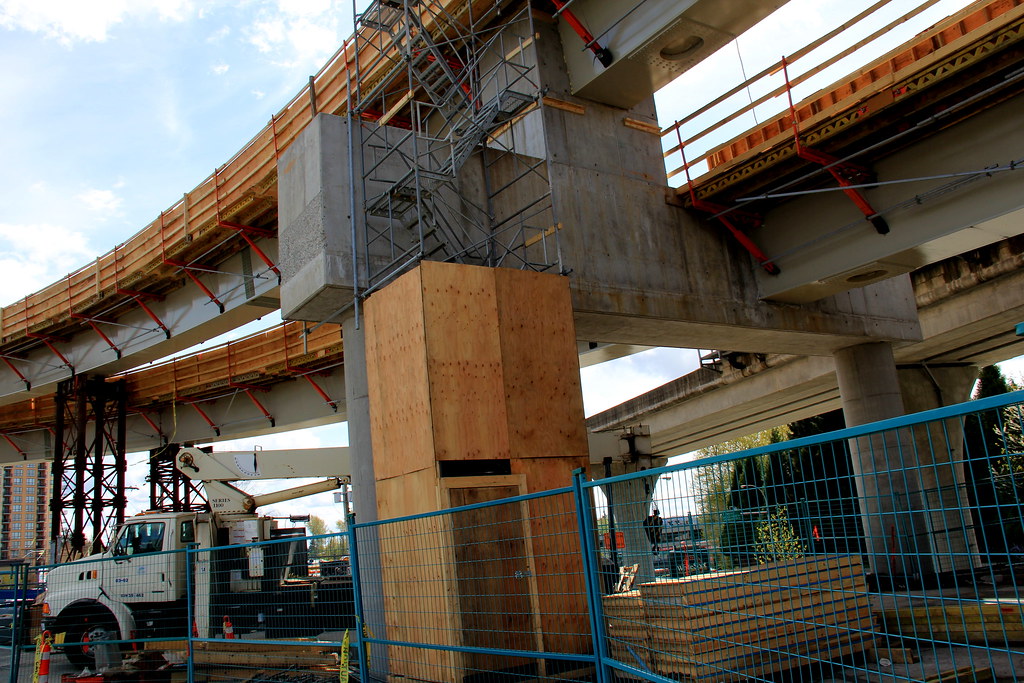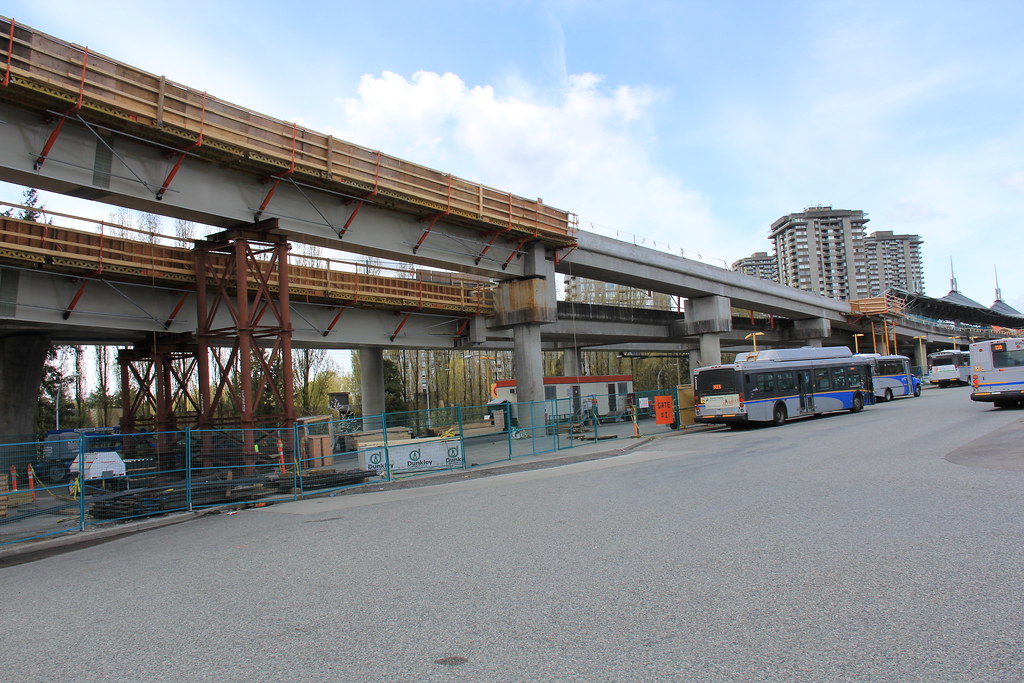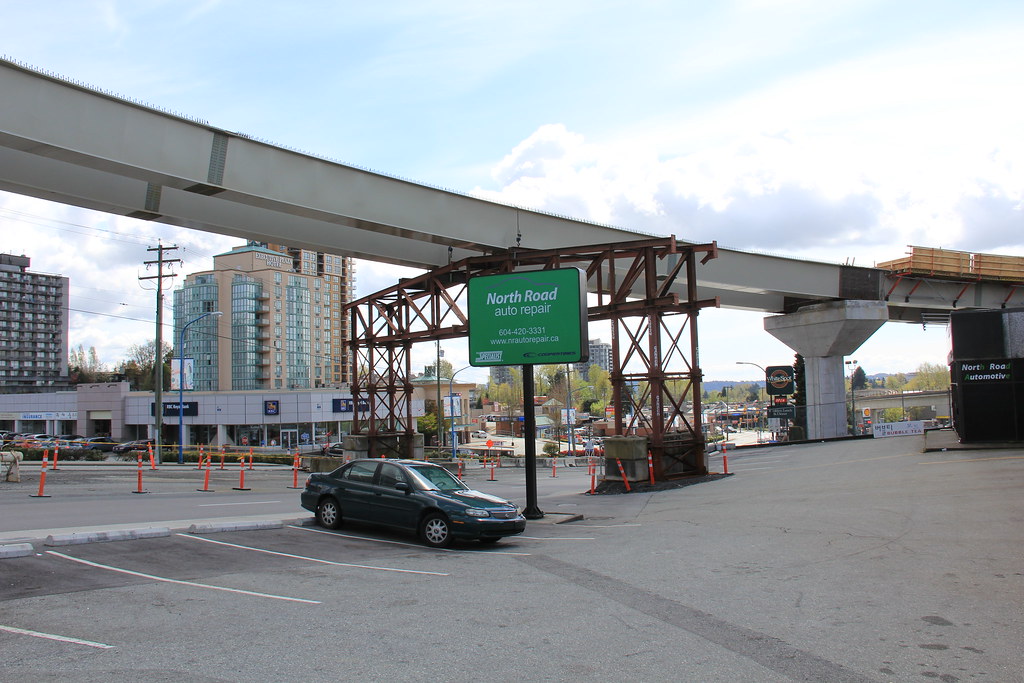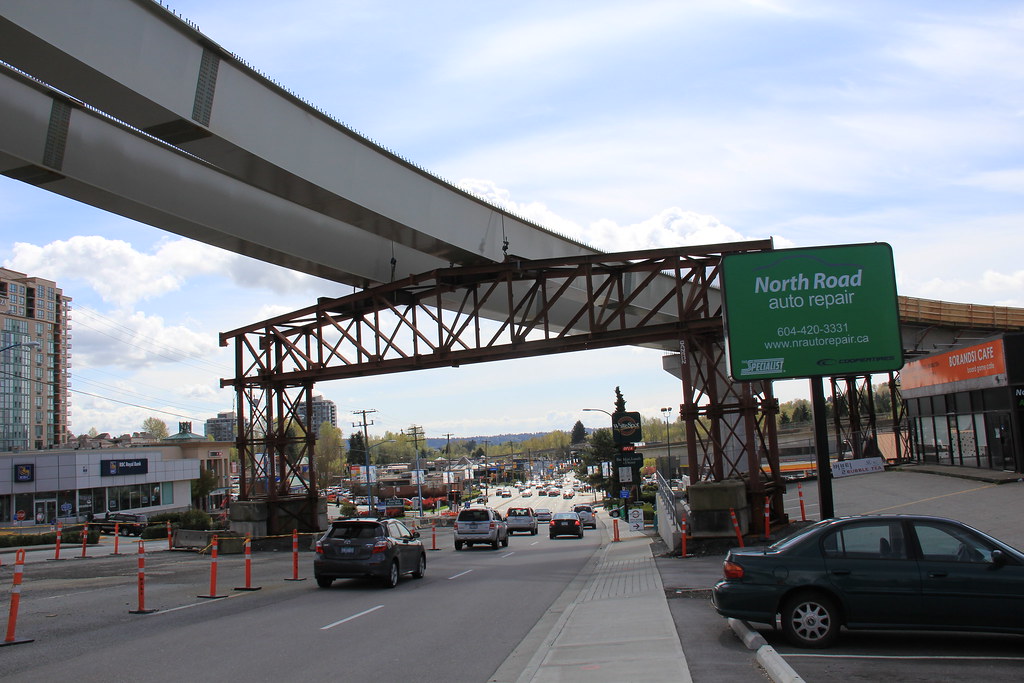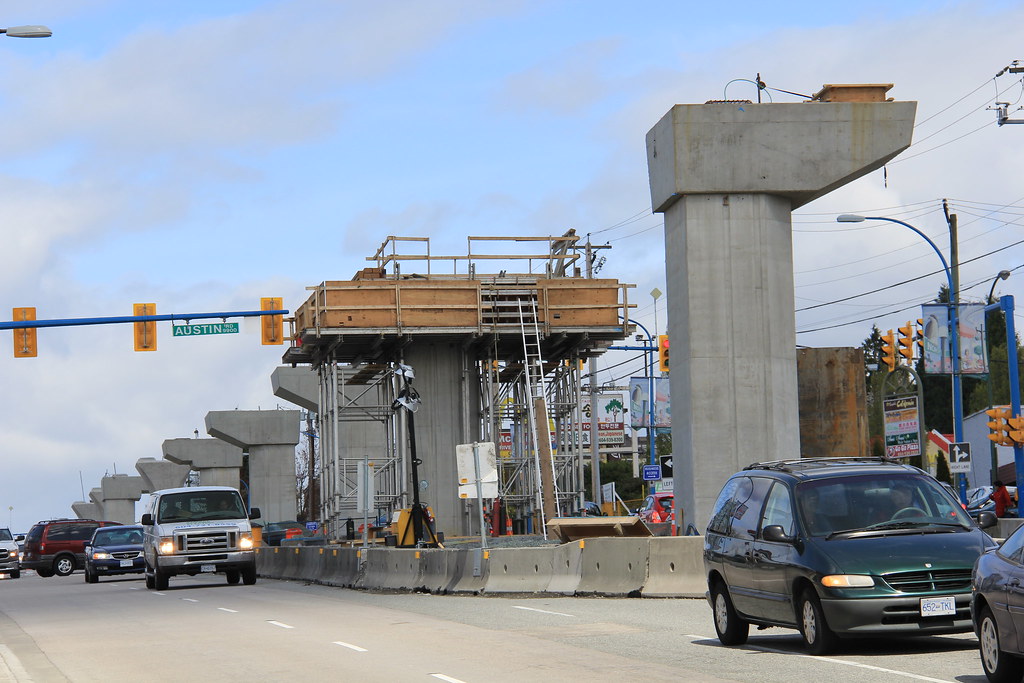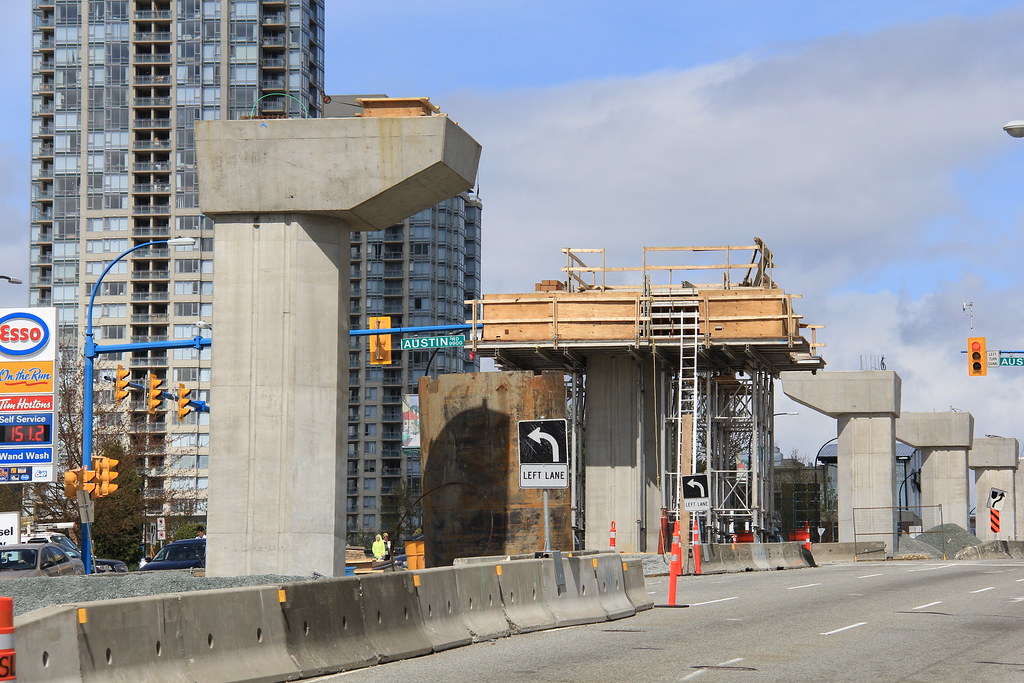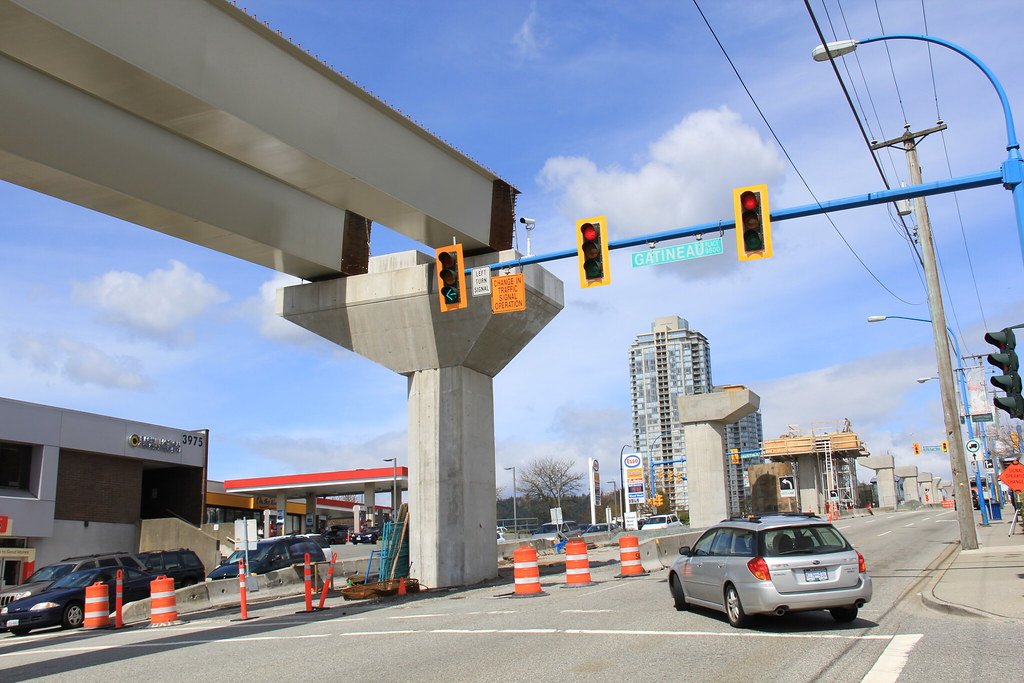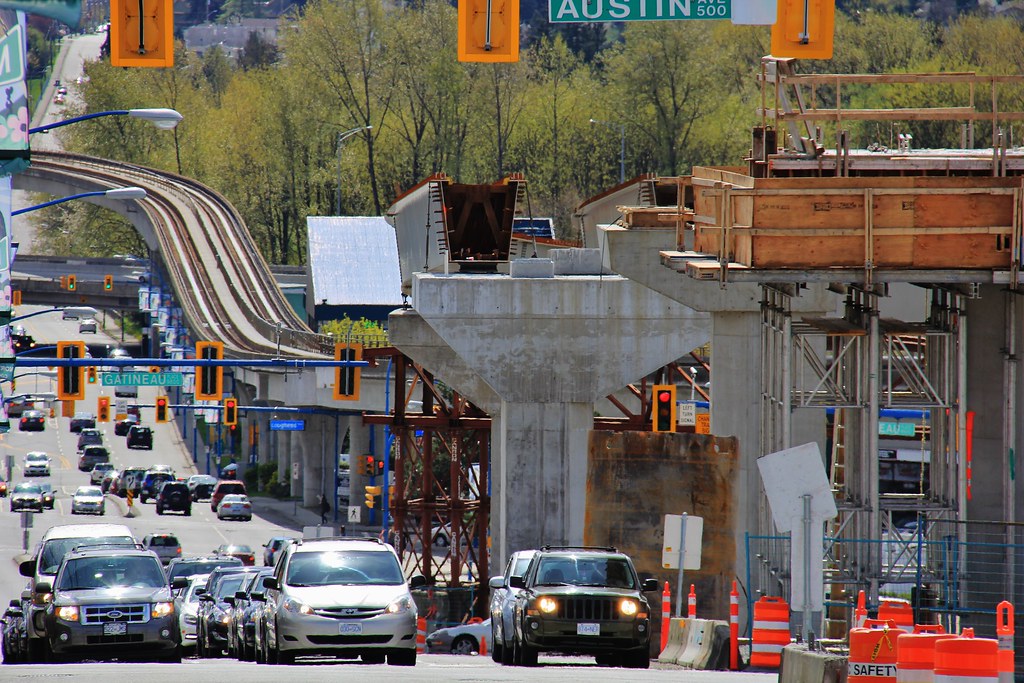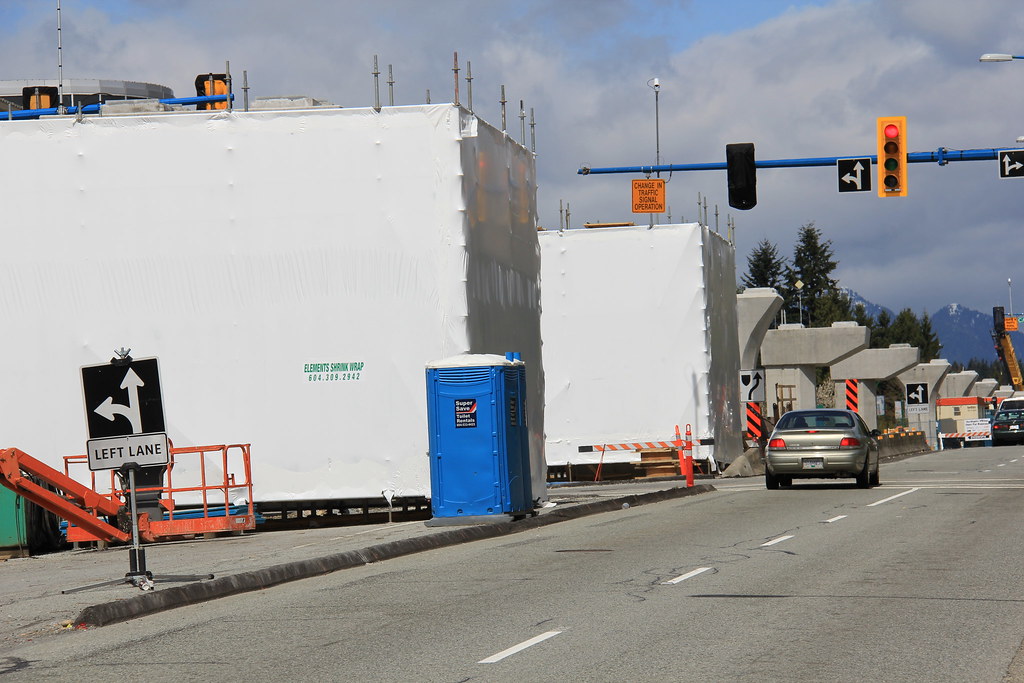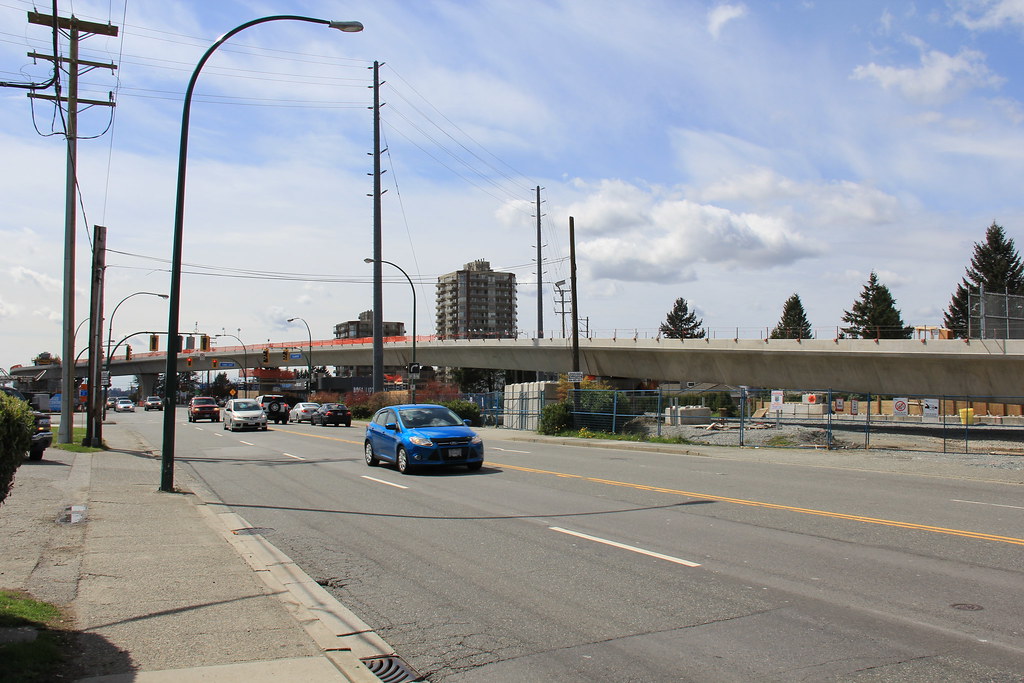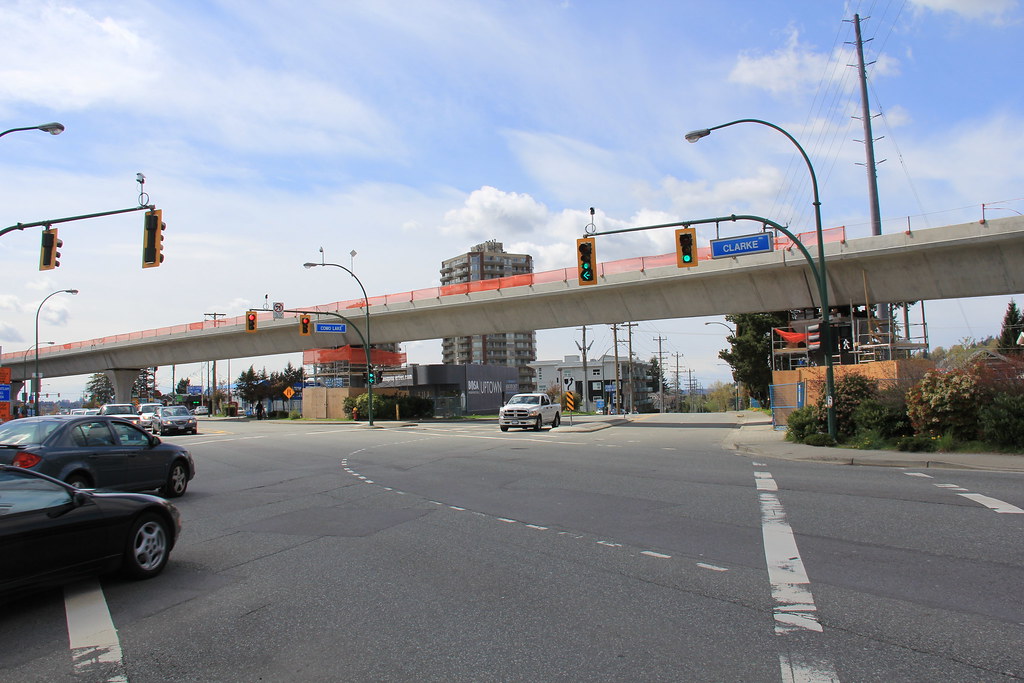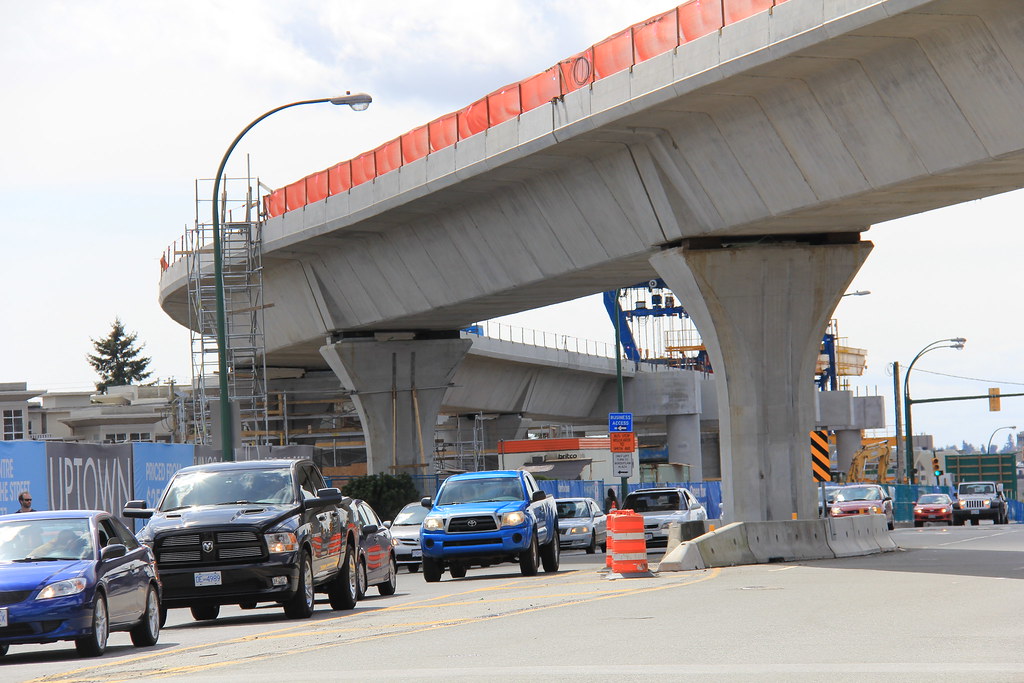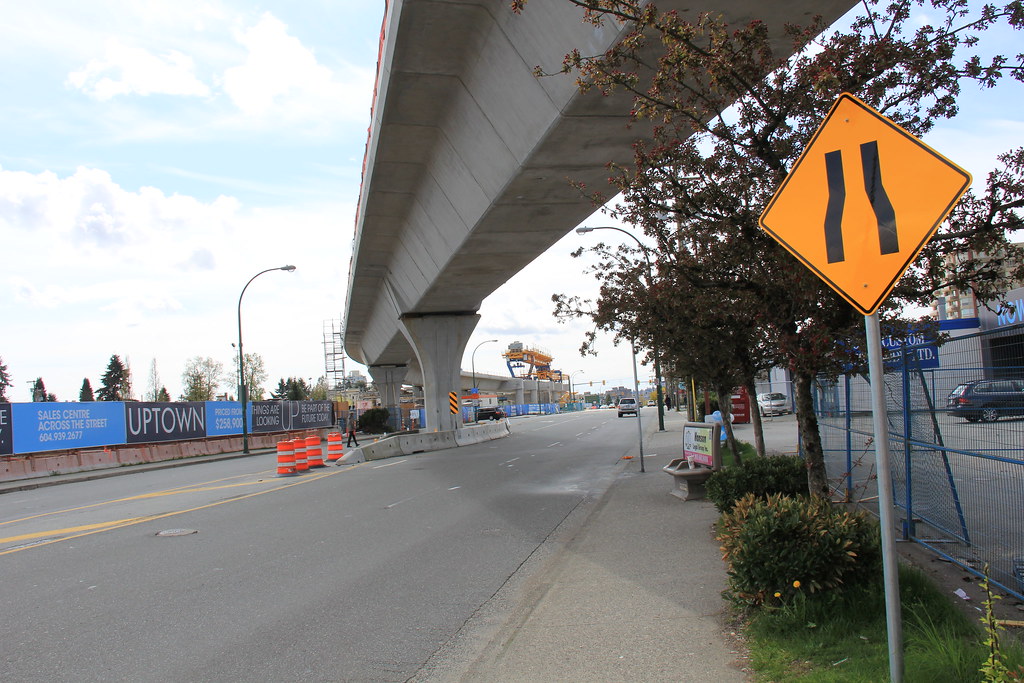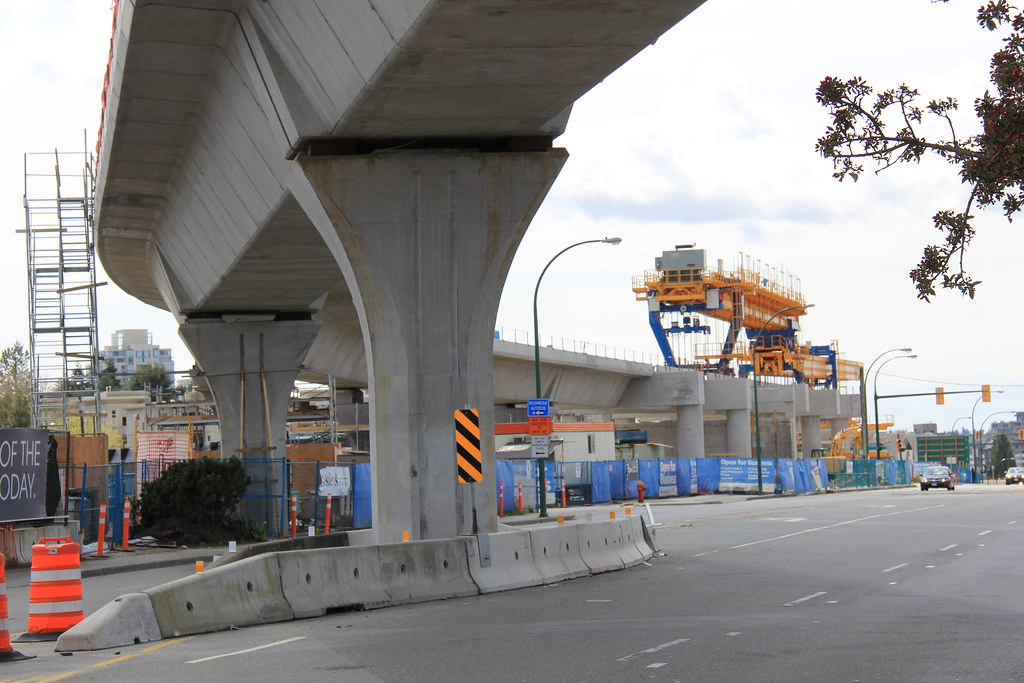On a Firm Footing: Metro Vancouver's Evergreen Line
Engineers for the latest branch of Metro Vancouver's light rapid transit system are dealing with highly unstable soils in the Port Moody and Coquitlam sections.
By: Jean Sorensen
2014-03-01
...
The $1.4 billion project is shaping up as a test of engineering ingenuity due to the geotechnical conditions along the rail path. They are seen as the biggest challenge in a project scheduled to complete in 2016.
“In a geotechnical sense, these are probably the most challenging conditions that I have seen in my career,” says SNC-Lavalin’s technical director Meiric Preece, P.Eng., who also worked on the Canada Line and the Millennium Line.
...
In December 2012, B.C.’s government entered into a fixed price, performance based contract with EGRT Construction consortium for $889 million to build the rapid transit infrastructure. Under the terms of the contract EGRT will be repaid a portion of the contract cost as work progresses but will not receive final payout until the line is operating.
EGRT Construction has also agreed to assume the risk for the geotechnical conditions and face penalities if completion is delayed. EGRT Technical manager Jeff Spruston, P.Eng. explains that while EGRT carries that responsibility, it has also “passed the risk to the subcontractors who are best able to manage those risks” in back-to-back agreements.
EGRT Construction’s subcontractors include SNC-Lavalin and SNC-Lavalin Constructors, Graham Building Services, International Bridge Technologies, Jacobs Associates Canada, Rizzani de Eccher, S.E.L.I. Canada, and MMM Group.
...
Highly unstable soils
“The geotechnical conditions are pretty good from the Lougheed area to the north end of the bored tunnel [in Port Moody],” says Preece, explaining that this section is considered mainly glacial till. But the area between Port Moody and Coquitlam is the legacy of old debris flows, old forests and logging areas and wetlands, plus ground where artesian pressures are a concern. “The area is very challenging,” he says.
“The conditions have caused engineers to look at alternative solutions to stabilize areas that must meet seismic requirements,” says Preece.
In Coquitlam, just east of Port Moody, engineers have found highly unstable soils. “We had a situation where soil conditions were highly liquefiable,” says Preece. The solution was to use timber densification on the soil. A 10-metre wide swath measuring 700 metres in length will have 12-15-metre long timbers driven into the ground at 1.2 metre intervals. A total of over 6,000 timber piles will be used to create seismic stability for the line’s guideways. While the technique of timber densification is not new and has also been used on the South Fraser Perimeter Road, “this is probably the most timber that has been used on a transit project,” he says.
Originally, the contract called for not using timbers because of a fear they would degrade. But EGRT was able to demonstrate that by ensuring the timbers in the ground remained wet, they would not be affected. The decision to use the timbers was made in collaboration with the province after other solutions did not provide the stability that was needed.
The technical director for the Province of B.C., Raymond Louie, says the solutions being implemented on the new line will “help our knowledge here” on rapid transit construction. One such application is soil mixing, which is more common in the U.S. but is having its first application in the Lower Mainland’s new transit line. Its use again arises from the need to bring sites in the Port Moody and Coquitlam area up to the seismic standards required. The process involves an on-site batch plant for low-strength concrete. The concrete is injected into the ground in columns, with the boring machine’s head able to inject the concrete and mix it with soil beginning at the bottom. The ensuing column will not only prevent the ground from moving but also provide vertical support for the guideways.
Soil mixing, which costs less than timber piles for soil stabilization, is being used on the portion of grade-level guideway by Golden Spike Lane that runs through Port Moody by the CPR tracks. Timbers are being used on a 750-foot stretch by rail tracks book-ended by the Balmoral Drive area through to Bond Street in Coquitlam.
Tunnel lining with steel fibres
U.S.-based Jacobs Associates are the engineers for the design of the segmental tunnel lining. This is the company’s second major contract in B.C.; it is also working on the Port Mann main water supply tunnel and has expanded its Vancouver office. The company’s other responsibilities on the transit line include ground improvements, the interface coordination of tunnel portals, geotechnical design, and the development of an instrumentation and monitoring plan.
One innovative feature of the tunnel is the use of steel fibres in the precast concrete segmental lining, which is placed behind the tunnel boring machine (TBM) to support the ground. “This is the first time we have used them on a one-pass, segmentally-lined tunnel in an area of moderate to high seismicity,” said Jacobs Associates’ engineer-of-record, Andrew McGlenn, P.Eng.. The moulds for the concrete segments were fabricated in Germany, with precasting by a company in Langley, B.C.
Traditionally, concrete reinforced with rebar has been used for the segments, but the steel fibres (like large staples) proved more cost efficient and often yield a more durable product, says McGlenn. A short section at each tunnel portal (roughly 50 metres at the north and 100 metres at the south) will have rebar reinforced concrete to deal with the transition zones where ground cover is low. “But, steel fibres will be used in the concrete on nearly 95 per cent of the tunnel,” he says.
Preece says that the single tunnel design (with dual track) was chosen partly because it has a reduced time and cost. Two individual tunnels would have required safety cross-passages every 244 metres, resulting in a mining effort and the high risk of dealing with ground water pressure of up to 40 metres of head at depths of 50 metres below ground. “There was a high risk to both cost and delay,” Preece says.
Due to begin boring in early March, the Caterpillar TBM is the largest seen in Vancouver and is over 9 metres in diameter. The machine arrived in December and was assembled at the tunnel’s north portal in Port Moody.
Box under a highway
One engineering feat, already accomplished, involved mechanically pushing into place a large concrete box under the Barnet Highway. The structure will serve as a portion of the Inlet Centre Station at the Port Moody-Coquitlam boundary.
The Petrucco Group, an Italian company specializing in box jacking, carried out the manoeuvre, which required closure of Barnet Highway just west of Loco Road over the last Remembrance Day long weekend. A full weekend closure allowed crews to construct the station guideway and platform within that timeframe, instead of 60 nights of work using a standard construction method.
The rectangular concrete box weighing 4,000 tons was formed on site. It is 15 metres wide, 7 metres high and 50 metres long. A row of 30 hydraulic jacks pushed it into position. Excavators were working inside the box clearing a path in front and removing earth. As the hole deepened, the jacks pushed the box into the void. A time-sequence of the procedure is available on the Evergreen Line website.
...
